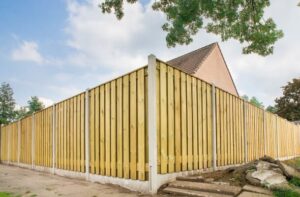Everything About El Cajon, California
History
The El Cajon Valley was originally inhabited by the Kumeyaay people. In 1769, the Spanish explorer Gaspar de Portolà camped near the present site of El Cajon while searching for the fabled “port of San Diego” described by Sebastián Vizcaíno in 1602. In 1845, Rancho El Cajon was granted to Maria Antonio Estudillo, daughter of Don José Antonio Estudillo, alcalde of San Diego. The land originally encompassed what is now El Cajon, La Mesa, and part of Spring Valley. In the late 1850s, El Cajon became known as “Middletown” because of its location between San Diego and Santee. In 1868, El Cajon Valley became part of San Diego County.
El Cajon was officially incorporated as a city in 1912. The name El Cajon is Spanish for “the box,” referring to the valley’s shape. In the early 20th century, El Cajon became known for its agriculture, growing citrus fruits, avocados, and poultry. During World War II, many aircraft manufacturing companies opened plants in El Cajon due to its ideal weather conditions. This spurred population growth and further development. El Cajon continued to expand rapidly in the postwar decades.
Geography
El Cajon is located 17 miles northeast of downtown San Diego in San Diego County. It sits in a valley surrounded by foothills and mountains. According to the United States Census Bureau, the city has a total area of 14.4 square miles.
El Cajon is situated just outside the San Diego metropolitan area. Neighboring cities include Santee to the northwest, Lakeside to the north, La Mesa to the west, and Spring Valley and Jamul to the south.
Geology
El Cajon is situated in a rift valley running northwest to southeast, formed by the Elsinore Fault Zone. The valley is filled by alluvial sediments deposited by the San Diego River. The valley soils are mostly well-drained brown sandy loams and loamy sands. The foothills surrounding El Cajon consist of granitic and metavolcanic rock.
Earthquakes are a hazard in the El Cajon area due to seismic activity along the Elsinore and other regional faults. The most recent major earthquake was the M6.7 El Cajon Valley quake in 1899, which caused serious property damage in the region. Smaller quakes rattled the area in 2010 and 2013. Other natural hazards include wildfires, floods, and landslides in the surrounding mountains.
Neighborhoods
El Cajon consists of the historic downtown surrounded by mainly residential neighborhoods. Some notable neighborhoods include:
- Parkway – Bordering the San Diego River, featuring parks and wooded hills. Includes Kennedy Park and Wells Park.
- El Cajon Colony – Established in the 1920s, known for unique architecture like storybook houses.
- Bostonia – Named after the Bostonia Company that developed the area in 1887. Features mid-century homes.
- Flying Hills – Upscale neighborhood in the northern foothills, adjoined by Rancho San Diego.
- West Hills – Features panoramic views and custom homes.
- Fletcher Hills – Middle class suburban-style homes built in the 1950s-60s.
- Rancho San Diego – Master-planned suburban community with golf courses, shopping, parks, and homes.
Climate
El Cajon has a warm Mediterranean climate, enjoying plenty of sunshine all year round. Summers are hot and dry, with average highs around 84°F. The warmest months are July and August. Winters are mild, with average highs of 67°F in January. Lows can dip into the 30s and 40s on winter nights.
Rainfall averages 12 inches per year, with most rain falling between November and April. The winter wet season brings a risk of showers and thunderstorms. Snow is extremely rare in the city. Morning fog may occur after winter rains. The climate is ideal for year-round outdoor activities. Smog can accumulate during warmer months.
Demographics
As of the 2010 United States Census, El Cajon had a population of 99,478. The racial makeup was 62.7% White, 22.4% Hispanic/Latino, 11.6% Asian/Pacific Islander, 5.9% Black, 1.4% Native American, and 3.3% other races. 27% of residents were foreign born.
The median age was 32. About 24.4% of households had children under 18. The median household income was $41,042 and 15.7% lived below the poverty line.
El Cajon is considered one of the most ethnically diverse cities in San Diego County. There are sizable communities of Latinos, Middle Easterners, East Africans, and South Asians. Since the 1990s, El Cajon has also seen an influx of immigrants from Iraq and the former Yugoslavia.
Economy
The economy of El Cajon is dominated by light manufacturing, retail, healthcare, education, and technology. Major employers include Sharp Grossmont Hospital, Taylor Guitars, Parkway Plaza mall, Cuyamaca College, and the El Cajon School District.
Up until the 1980s, aerospace was a major industry in El Cajon. Companies like General Dynamics and Convair had large operations in the city. After cutbacks in the defense industry, the focus shifted more to diversified commercial businesses.
Downtown El Cajon has seen a revitalization in recent years, with the addition of restaurants, boutiques, galleries, and events bringing more business and visitors. Housing construction, automotive sales, and various professional services and trades make up other important sectors. The city is centrally located and has affordable real estate, attracting companies.
Culture
El Cajon offers an array of cultural attractions and events. The East County Performing Arts Center is a renowned concert venue hosting musicians and Broadway productions. The Magnolia Center, located in former El Cajon High School, offers exhibits on local history.
Popular events include the Mother Goose Parade in November, celebrating nursery rhyme characters with floats and marching bands. Every August, tens of thousands flock to the International Tamale Festival for food and entertainment. Other events cover multicultural themes, cars, craft beer, and more.
Outdoor recreation abounds. Prescott Promenade and East Main Street offer pedestrian-friendly shopping and dining downtown. Parks like Wells Park, Kennedy Park, and Cameron Park provide scenic natural areas with sports fields, pools, and trails.
El Cajon is home to a well-established Iraqi and Chaldean Catholic community. Middle Eastern restaurants and groceries provide ethnic cuisine and culture. Art and culture from Mexican, East African, and South Asian communities also enrich El Cajon.
Colleges and universities
El Cajon’s proximity to San Diego and affordable housing make it attractive for college students. Local institutions of higher learning include:
- Cuyamaca College – Public community college offering two-year degrees, certificates, and career education programs.
- Grossmont College – Largest community college in the East County region, with career-oriented programs.
- San Diego Christian College – Private liberal arts college with theology, business, and music programs.
- California University of Management and Technology – For-profit university specializing in business and management.
- Platt College San Diego – Offers vocational programs in healthcare, business, and media design fields.
Many students also commute from El Cajon to major universities in San Diego like SDSU and UCSD.
Media
El Cajon is served by local San Diego area media outlets. Newspaper coverage comes via the San Diego Union Tribune. Popular radio stations include KECR FM and KGB FM. Top network TV affiliates include KFMB CBS, KGTV ABC, KNSD NBC, and KUSI Independent.
The East County Californian is a free community paper focusing on the El Cajon region. East County Magazine covers politics, arts, and culture. The Patch is a digital-only hyperlocal news source. Local studios and papers like MainStreet Media and The Foothills Community News also provide community journalism.
Roadways
El Cajon is conveniently located near major highways and interstates. Interstate 8 runs along the northern edge of the city, leading west to San Diego and east to Imperial County. State Routes 67 and 125 also connect El Cajon to San Diego and Spring Valley.
Major surface streets include Broadway and Main Street, both running northwest to southeast. Other arterials include Magnolia Avenue, 2nd Street, and Fletcher Parkway. Traffic congestion occurs during rush hours, especially on I-8. Plans are in the works to extend the San Diego Trolley to El Cajon.
Major Landmarks
Some of the most notable landmarks in El Cajon include:
- El Cajon City Hall – Striking 1968 mid-century modern civic building designed by William Blurock. Home to the City Council.
- East County Performing Arts Center – State-of-the-art theater hosting Broadway shows, concerts, and events. Opened in 1977.
- El Cajon Public Library – A Carnegie library built in 1904, renovated in 2004. Features a Children’s Room and Heritage Room.
- Ronald Reagan Community Center – Sprawling sports complex with pools, gym, fields, skate park, and events center.
- Kennedy Park – Largest park in the city, with a pool, amphitheater, recreation center, and nature areas.
- Magnolia Avenue – Lined with shops, restaurants, and murals. Part of historic downtown district.
- El Cajon Valley High School – Oldest high school in region, opened in 1923. Known for astronomy program.
El Cajon has grown from a small agricultural town into a thriving diverse community located close to all the opportunities of the San Diego region. With a sunny climate, affordable housing, and rich mix of culture, El Cajon continues to be an attractive place to live, work, and visit.
Service Area
East El Cajon (91919, 92021)
Downtown El Cajon (92020)
Fletcher Hills (92020)
Rancho San Diego (92019)
Casa de Oro (92019)
Bostonia (91919)
Granite Hills (92019)
Pepper Drive (92020)
Lakeside (92040)
Parkway (92020)
Emerald Hills (92020)
West El Cajon (92020)
Fletcher Peak (92020)
Anderson (92020)
Wells Park (92020)
Los Coches Adobe (92019)
Greenfield (92021)
Lexington Hills (92020)
Singing Hills (92019)
Mt Helix (92040)
Hours
Monday: 9:00 AM – 5:00 PM
Tuesday: 9:00 AM – 5:00 PM
Wednesday: 9:00 AM – 5:00 PM
Thursday: 9:00 AM – 5:00 PM
Friday: 9:00 AM – 5:00 PM
Saturday: 9:00 AM – 5:00 PM
Sunday: 9:00 AM – 5:00 PM
Contact Us.
Get Solutions For All Fencing Services
Every day from
9:00 — 5:00
Call to ask any question





